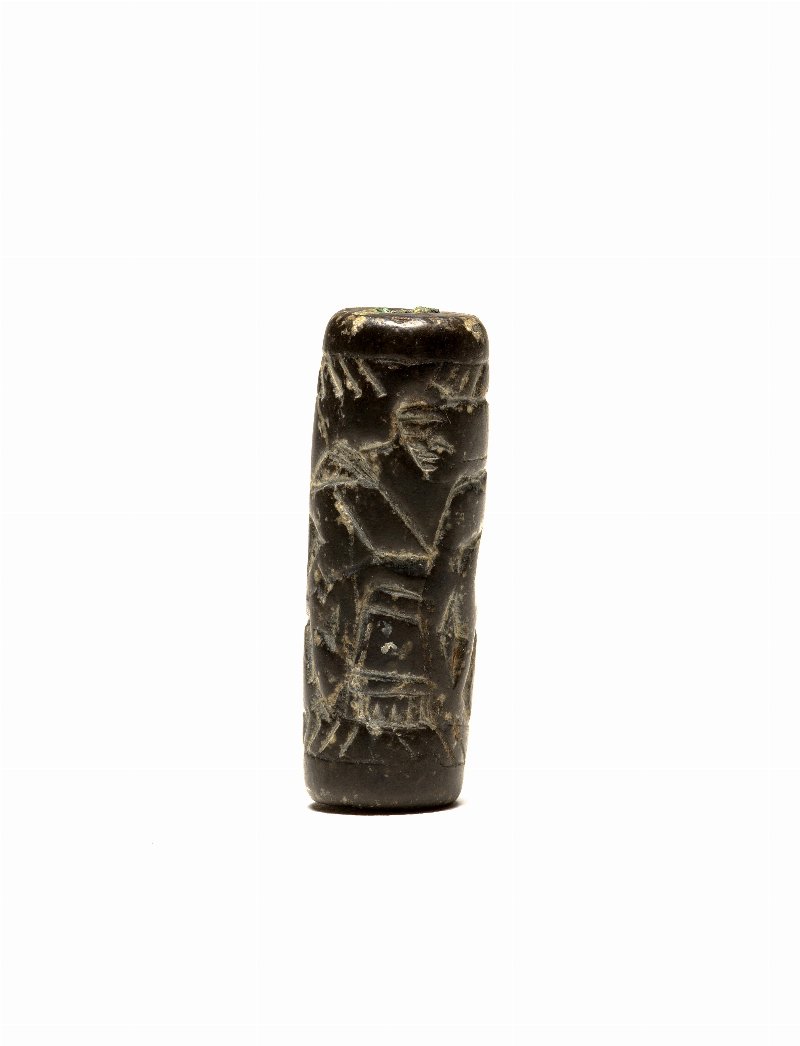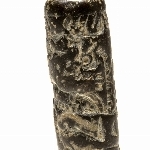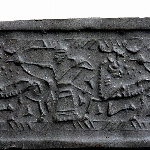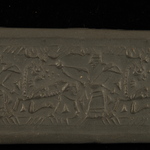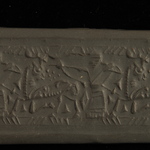Cylinder Seal
61-5-20
Location: On Display in the Preserving Assyria
From: Iran | Hasanlu
Curatorial Section: Near Eastern
| Object Number | 61-5-20 |
| Current Location | Preserving Assyria - On Display |
| Culture | Assyrian |
| Provenience | Iran | Hasanlu |
| Archaeology Area | LXXVIII(3)[2]/107 |
| Period | Assyrian | Hasanlu Period IVB |
| Date Made | 9th century - 8th century BCE |
| Section | Near Eastern |
| Materials | Steatite (uncertain) |
| Description | From Marcus Publication: "Black marble. Tin suspension pin in perforation, splayed at bottom, with remnant of loop end at top. A standing bearded archer, facing left, wearing along fringed tunic with a broad belt, aims his bow at a stag. The stag breaks down on its forelegs. The body of the animal faces left while the head is turned in reverse towards the archer. He has large antlers. aligned horizontally with two tines projecting in front; his eye is framed by double lines at left and below. There are serrations along the back of his neck and a band of vertical serrations along his underbelly; a curved shoulder line is indicated . the archer carries at his waist a scabbard decorated with applied metal strips, and on his back a quiver, from with protrudes the tips of two arrows(?). The face of the archer is marked by horizontal striations; his feet are not indicated, being cropped by the lower border pattern. Behind the archer are two cuneiform-like wedges. Two additional wedges are between the legs of the stag; six globed are before his head. A lozenge is in the lower field between the opponents." Black soft stone, probably steatite; remains of bronze suspension loop and wire in perforation preserved, two ends of wire visible at bottom of cylinder. (They would have projected a little more than now and have been turned over. The present state suggests that they broke off recently, note color!). Scene: Archer aiming at Stag. The archer with head indicated by horizontal lines, wears a long robe with fringe at bottom, tied with a broad belt. He carries a sword and a quiver of which two arrows project over his shoulder. The stag has fallen on its forelegs and turns its head backwards. Four cuneiform wedges, seven small globes, crescent and lozenge in field. Design bordered above and below by pattern of four oblique lines in changing directions. The elaboration of the stag’s body and the motif of the animal as such may indicate an origin before the 8th c. Despite some slightly unusual features, the cylinder was made either by an Assyrian seal cutter or one intimately familiar with Assyrian iconography. |
| Credit Line | The Hasanlu Project; Robert H. Dyson Jr., 1961 |
| Other Number | HAS60-108 - Field No SF |
Report problems and issues to digitalmedia@pennmuseum.org.


